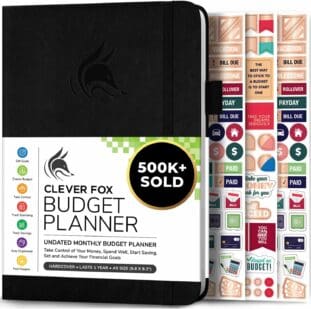Learn how to create financial projections for a business plan using clear, simple steps even non-financial business owners can follow. Discover 9 smart ways to forecast revenue, expenses, profit, cash flow, and break-even points—plus tools, templates, and real examples to help you get it right.
If you’ve ever sat down with a cup of coffee, opened your laptop, and stared blankly at a spreadsheet trying to figure out how on earth anyone creates financial projections for a business plan, trust me—you’re not alone.
When I first started helping small business owners create their business plans, the financial section was always the one that got the most wide-eyed looks.
People weren’t intimidated by writing about their company vision or even describing their services. But the minute we got to numbers?
You could practically hear the gears grinding to a halt.
But here’s the truth I learned from years of working with trades and service businesses: you don’t need to be a CPA to create solid, realistic, and convincing financial projections. What you do need is structure… and a little guidance.
That’s exactly what today’s post will give you.
In this step-by-step guide, you’ll learn how to create financial projections for a business plan in a way that feels doable—even if spreadsheets aren’t your best friend.
We’ll walk through setting financial assumptions, forecasting revenue, mapping expenses, projecting cash flow, calculating break-even points, and even choosing the right tools to make the job easier.
I’ll also share the kind of common-sense, experience-based tips I’ve only learned from sitting across the table from worried business owners who just needed someone to break it all down—without the jargon, without the panic.
Before you start, you may also want to review the Business Plan Pillar Post, especially if you’re building out the full plan step-by-step:
👉 https://improvebusinessprocesses.com/8-proven-steps-on-how-to-write-a-small-business-plan-that-works/
Ready? Let’s unpack the steps.
Step 1. Financial Projections in Business Plan: Start With Clear Financial Assumptions
Every solid projection starts with assumptions. Think of these as the “rules of the game” that keep your estimates grounded in reality.

When learning how to create financial projections for a business plan, you’ll rely heavily on assumptions like:
- Estimated number of customers
- Average sale price
- Expected monthly growth
- Seasonal fluctuations
- Startup costs
- Cost of goods sold
- Expected operational expenses
Here’s something I learned the hard way: assumptions are not guesses. They’re informed estimates based on:
- Market research
- Historic data
- Industry benchmarks
- Supplier quotes
And if you’re in the trades or services (plumbing, HVAC, electrical, home renovations), assumptions often come from your past jobs, labor efficiency, and average ticket size.
Try to document all your assumptions early. You’ll thank yourself later.
Step 2. Financial Projections for Small Business: Forecast Revenue Using Realistic Sales Estimates
This is where projections become exciting—because this is your income story.
Revenue forecasts typically include:
- Number of units sold
- Price per unit
- Total sales per month or year
If you’re new to revenue forecasting, start with three scenarios:
- Conservative – in case your early months are slow
- Moderate – your most realistic scenario
- Optimistic – for strong market response
The key is remembering that financial forecasts don’t reflect perfection—they reflect planning. And planning improves your survival odds dramatically.
Step 3: Project Your Operating Expenses
Next, outline all your operating costs.
These may include:
- Rent
- Payroll
- Marketing
- Insurance
- Website & tools
- Utilities
- Supplies
- Vehicle expenses
- Contractor fees
In the trades and service industries, one overlooked category is “drive time and fuel consumption”—a common hidden cost.
Knowing your operating expenses projection ensures you’re not caught off guard when analyzing cash flow later.
Step 4. Break Even Analysis for Startups: Finding Your Profit Point
This is where you need to build a Profit and Loss Projection (P&L) as you review how your revenues and expenses collide, revealing whether you’re making money—or quietly sinking.
A good P&L projection includes:
- Revenue
- Cost of goods sold
- Gross profit
- Operating expenses
- Net profit
If you’re using Excel or Google Sheets, this is where the math really begins to feel alive. Don’t panic—you don’t need complicated formulas. The basic structure is simple:
Revenue – COGS = Gross Profit
Gross Profit – Expenses = Net Profit
This is also a great place to use a financial template or plug-and-play spreadsheet.
📌 Helpful Resources for Your Business Plan
If you’re working through the financial section of your business plan, these guides can help you structure the rest of your document with confidence:
👉 Company Overview Section: What to Include
https://improvebusinessprocesses.com/company-overview-section-business-plan/
A clear breakdown of how to write a strong, professional overview that sets up your financial section for success.
👉 8 Proven Steps on How to Write a Small Business Plan That Works
https://improvebusinessprocesses.com/8-proven-steps-on-how-to-write-a-small-business-plan-that-works/
Your complete roadmap for writing a business plan that’s lender-ready and easy to follow.
Step 5. Cash Flow Projections for Small Business: Understanding Inflows and Outflows
Your cash flow projection tells you when money flows in and out.
A business can be profitable on paper and still run out of cash—it happens more often than you think.
A cash flow projection includes when payments are received, when bills must be paid, seasonal dips, delayed customer invoicing, and deposits and retainers.
How do you create cash flow projections for small business?
Gather historical financial data, including income statements and cash flow statements. Estimate future sales based on market research and growth trends.

Project fixed and variable expenses, including rent, utilities, payroll, and materials. Calculate estimated sales and expenses, and net cash flow by subtracting total expenses from total income for each month.
Adjust your projections based on seasonal trends or anticipated changes in business operations, and finally review and update these projections regularly based on actual performance and changing market conditions.
A client of mine once said, “My busiest month nearly bankrupted me.”
Why? Because while revenue was high, expenses were higher—and payments came in too slowly.
Cash flow matters more than profit when it comes to survival.
Step 6. How to Perform a Break Even Analysis for a Business Plan
The break-even point tells you the exact moment your business covers its costs and starts making profit.
It’s essential in how to create financial projections for a business plan, because lenders and investors often ask for it.
Break-even formula:
Fixed Costs ÷ (Price – Variable Cost) = Units Needed to Break Even
This helps answer:
“How much do I need to sell before I start earning real profit?”
Use this step to test pricing strategies and business models.
Step 7: Organize Your Financial Statements for the Business Plan
At this point, compile your:
- Income statement
- Cash flow statement
- Projected balance sheet
- Break-even chart
A great business plan tells a clear financial story, not a complicated one. Keep your projections clean, logical, and easy to follow.
Remember: These statements back up the narrative you created in other business plan sections—like your Company Overview.
Step 8: 📌 Recommended Tools to Simplify Your Financial Projections
Here’s something most business owners don’t realize:
You don’t have to build financial projections from scratch.
There are incredible tools and resources that simplify forecasting—even if numbers aren’t your strong suit.
Below are two Amazon.ca resources that small business owners love. They can make the financial section of your business plan a whole lot easier PLUS a downloadable Financial Projection Template.
📘 1. Financial Intelligence for Entrepreneurs (Book)
This book is widely recommended for helping non-financially savvy founding owners understand the fundamentals of cash flow, profit, and business ratios in plain English.

Financial Intelligence for Entrepreneurs (Book) – Berman & Knight

CLEVER FOX Simple Business Financial Planner & Budget Workbook
⭐ 2. “Simple Business Financial Planner & Budget Workbook”
A simple personal, fill-in-the-blanks workbook perfect for business owners who prefer a structured financial planning template.
However, if you prefer digital tools, consider:
- Google Sheets templates
- Excel forecasting tools
- Wave Accounting
- FreshBooks (great for trades)
- QuickBooks cash flow features
📥 3. Ready to Build Your Financial Projections Faster?
If you want a simple, plug-and-play way to organize your revenue forecast, expense plan, cash flow, and break-even analysis, grab this Financial Projection Calculator.
It’s easy to use, perfect for small businesses in the trades and service industries, and designed to help you present clean, lender-friendly numbers.👉
Download Your Financial Projection CalculatorStep 9: Review, Refine, and Stress-Test Your Projections
Before finalizing your business plan, stress-test your numbers.
This means asking:
- What if sales drop by 20%?
- What if expenses increase?
- What if a supplier cost changes?
- What if growth takes longer than expected?
Use “what-if” scenarios to validate your assumptions.
This is also when you update:
- Operational costs breakdown
- Revenue modeling
- Financial assumptions
Then package everything clearly inside your business plan.
Conclusion: How to Create Financial Projections for a Business Plan
You’re more capable than you think!
Learning how to create financial projections for a business plan may feel overwhelming at first, but once you break it into manageable steps, it becomes surprisingly doable.
You don’t need perfect math.
You don’t need a finance degree.
You just need structure, clarity, and the right tools.
With the 9 steps above—and a bit of practice—you’ll build projections that strengthen your business plan, give you confidence in your numbers and reduce the risk of unpleasant surprises!
Prefer assistance instead?
Contact BCINC TodayFAQs for How to Create Financial Projections for a Business Plan
What are financial projections in a business plan?
Financial projections estimate future revenue, expenses, and cash flow to show how your business will perform financially.
What financial statements should be included in a business plan?
An income statement, cash flow statement, projected balance sheet, and break-even analysis.
Why are financial projections important?
They help lenders assess risk, guide pricing decisions, and show if your business can be profitable.
How far ahead should financial projections go?
Most business plans include 1-year monthly projections and 3-year or 5-year annual projections.
References
BDC – 6 steps to making financial projections for your new business https://www.bdc.ca/en/articles-tools/start-buy-business/start-business/6-steps-making-financial-projections-new-business

